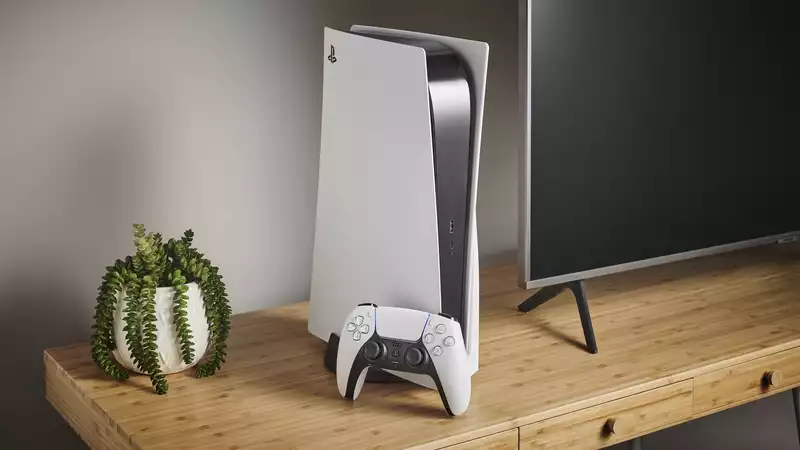This looks next-gen. Insomniac Games, the Sony studio that recently developed the excellent PS5 exclusive Ratchet & Clank, has released a patch to support 120Hz displays at 40 fps: Insomniac Games, the Sony studio behind Rift Apart fps and released a patch to support 120Hz displays. This improves the original 30 fps frame rate in full 4K "fidelity mode" by an additional 10 fps.
Playing games on the LG C9 OLED TV at both the original 30fps and the new 40fps mode proved to be, without a doubt, the new standard for future 4K console gaming.
As detailed in the release notes for version 1.002, the added 120Hz display mode "reduces input latency when using compatible displays. In this mode, the frame rate target for Fidelity graphics mode increases to 40 frames per second." What this means is that games that once looked choppy with multiple particles and raytraced effects are now 30% smoother.
Still not as smooth as the 60fps low-resolution "Performance RT" mode, but the frame increase was enough to produce a happy medium between the standard 30fps "Fidelity" and "Performance" modes.
Most console games run at either 30fps or 60fps. This makes sense since most TVs are based on a 60 Hz refresh rate; a 60 Hz TV means that the display refreshes 60 times per second. This means that a game running at 30 fps on a 60 Hz display will refresh a new frame every other time.
A game running at 60 fps on a 60 Hz display will have an even smoother image because a new frame is introduced at each refresh. Also, if a 60 fps game is running on a 120 Hz display, it will look just as smooth.
For this Ratchet & Cranks 120Hz display mode, Insomniac Games was able to bring the game up to 40fps in 4K fidelity mode. For most gamers, a 40fps refresh rate may seem odd, but it actually splits up nicely to a 120Hz display; as The Verge points out, each frame is displayed in three refresh cycles.
A user on the forum ResetEra broke down the frame rate changes in milliseconds: a 60fps game has a frame time of 16.7ms; a 30fps game has a frame time of 33.3ms; a 40fps game has a frame time of 25ms, right in the middle.
The YouTube channel NX Gamer does an excellent job of explaining how this works on a more detailed level.
This gives "Ratchet & Clank" a well-deserved frame rate boost, and you can really feel the effects during gameplay. When I first launched Rift Apart, I played an hour of the game in its original 30fps Fidelity mode. I found the choppiness too jarring considering all the effects happening on the screen at once.
So instead, we decided that a better gameplay experience would be to lower the resolution to 1440p (dropping it slightly to 1080p) and choose the Performance RT mode, which also lowers certain effects and ray tracing. Even with the graphics compromise, the added smoothness helped somewhat with motion sickness.
However, after the July 1 patch, the frame rate improved enough that we have stuck with the 120 Hz display mode ever since. The power of the PS5, with its thorough attention to detail on Insomniac's reflective surfaces, could be fully seen in the smooth images.
The only downside to this is that gamers will need to upgrade to a 120Hz display. Also, one that can produce a rich HDR image would be ideal. As mentioned in our roundup of the best gaming TVs, this includes the top-of-the-line sets from each manufacturer.
Also, for gamers who are desperate to check out the PS5 restock, spending $500 for a gaming console and having to buy a $1,000+ TV is a huge burden.
I love my LG C9 OLED, but it has been discontinued. Fortunately, there are many TVs with comparable, if not better, features that I would gladly recommend.
I am personally an LG OLED fan, and either this year's C1 class or last year's CX would be rigorous performers. Unfortunately, OLED sets are among the most expensive TVs on the market. Occasionally, you can find refurbished LG OLEDs for sale at retailers like Micro Center. That way I could buy my own set. For example, last year's 55" LG CX OLED can be had for $1,000. Expensive, but $600 less than Best Buy's current 55" C1 class.
For those who prefer the increased brightness found in QLED TVs, TV editor Brian Westover praises both Samsung's QN90A Neo and TCL's 6-series Roku TV. The latter is a more affordable option at $1,099. Not only do these sets support 4K 120Hz output, but they both have vivid, rich panels that can produce stunning HDR images.
For those looking for TVs under $1,000, the ULED U8G from Hisense and the M Series from Vizio are two great options. Still, these TVs hover between $700 and $900. Unfortunately, at this point, going below this price range will result in the reduced HDR performance that the latest games take advantage of.
Of course, if Sony releases a variable refresh rate patch for the PS5, this 120Hz display mode ideal may become irrelevant. And for those who want the best visual experience on PS5, "Ratchet & Clank: Rift Apart" proves that a top-end 120Hz TV is a must. It's that truly great.
.









Comments